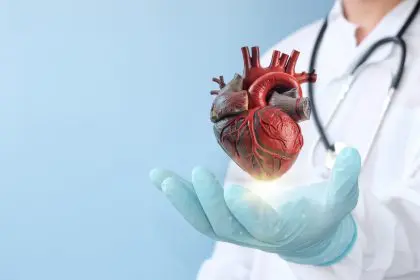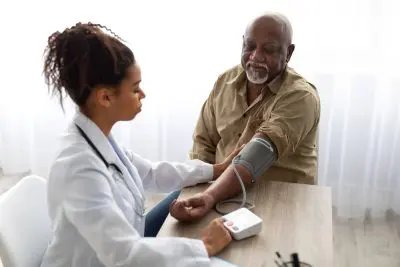The human circulatory system represents an intricate network of vessels that extends throughout the entire body. This complex arrangement of arteries, veins, and capillaries works continuously to deliver oxygen and nutrients to tissues while removing waste products. When functioning properly, this system maintains optimal health across all organs and extremities.
Arteries carry oxygen-rich blood away from the heart to the body’s tissues and organs. Their walls contain smooth muscle that helps regulate blood pressure and flow. As arteries branch out, they become progressively smaller, eventually turning into tiny capillaries where oxygen and nutrient exchange occurs at the cellular level.
Veins perform the opposite function, collecting blood from tissues and returning it to the heart. Unlike arteries, veins contain valves that prevent backward flow as blood travels against gravity, particularly in the legs. When these valves weaken or fail, circulation problems often develop.
Capillaries connect the arterial and venous systems, forming the smallest blood vessels where actual exchange of oxygen, nutrients, and waste products takes place. These microscopic vessels penetrate nearly every tissue in the body, ensuring cells receive essential supplies.
Understanding this interconnected network helps explain why circulation problems can manifest in seemingly unrelated ways throughout the body. A malfunction in one area often signals broader issues that merit medical attention.
Buttock pain: the overlooked circulation warning
One of the most frequently overlooked signs of circulatory compromise appears in an unexpected location – the buttocks. Pain in this region, particularly when walking or climbing stairs, may indicate reduced blood flow to the gluteal muscles due to narrowed arteries.
This condition, known as gluteal claudication, typically worsens with activity and improves with rest. The discomfort results from insufficient oxygen delivery to muscle tissues during periods of increased demand. While many dismiss such pain as simple muscle strain or sciatica, it can represent a serious circulation issue.
The arteries supplying the buttock region can develop the same type of plaque buildup that affects vessels elsewhere in the body. This atherosclerotic process restricts blood flow and oxygen delivery, resulting in pain during activity when muscles require additional blood supply.
People experiencing persistent buttock pain, especially when it follows a pattern of appearing during walking and subsiding with rest, should consider circulation as a potential cause. This symptom warrants medical evaluation to identify possible arterial narrowing before it progresses to more serious complications.
Red, tight, or shiny skin signals venous trouble
Changes in skin appearance, particularly on the legs, often serve as visible indicators of underlying venous problems. When veins struggle to return blood efficiently to the heart, pressure builds in the lower extremities, causing distinctive skin changes visible to the naked eye.
Red discoloration develops as small blood vessels near the skin surface expand in response to increased pressure in larger veins. This redness may be accompanied by a feeling of warmth as blood stagnates in the affected area rather than returning properly to the heart.
Skin tightness occurs as fluid leaks from pressurized veins into surrounding tissues, causing swelling that stretches the skin. This tightness often worsens throughout the day and may be accompanied by a sensation of heaviness in the legs.
A shiny appearance develops when swelling becomes significant enough to stretch the skin to its maximum capacity. This glossy look, often resembling stretched plastic, indicates advanced venous insufficiency requiring medical intervention.
These skin changes typically begin gradually and progress over time if the underlying circulation problem remains unaddressed. Early recognition and treatment can prevent advancement to more serious conditions like venous ulcers or chronic skin changes.
The connection between circulation problems and heart health
Circulation issues and heart problems frequently occur in tandem, reflecting the interconnected nature of the cardiovascular system. The health of blood vessels throughout the body often mirrors the condition of coronary arteries supplying the heart itself.
The same inflammatory processes and plaque deposits that narrow peripheral arteries in the legs or elsewhere typically affect coronary vessels simultaneously. This shared disease process explains why symptoms of poor circulation often accompany or precede heart problems.
Risk factors for circulation difficulties—including high blood pressure, elevated cholesterol, diabetes, smoking, and sedentary lifestyle—similarly increase heart disease risk. Managing these factors improves both circulatory and cardiac health.
When blood vessels narrow or become obstructed, the heart must work harder to pump blood throughout the body. This increased workload can lead to heart enlargement, weakening, and eventually heart failure if left untreated.
Early detection of circulation problems allows for interventions that protect both vascular and heart health. Treatments that improve blood flow throughout the body typically benefit cardiac function as well, highlighting the importance of addressing circulatory symptoms promptly.
Seven warning signs that demand attention
Recognizing circulation problems early can prevent serious complications and even save lives. Seven key warning signs deserve particular attention as they often indicate significant circulatory compromise requiring medical evaluation.
- Chest pain or pressure, especially during physical activity, requires immediate medical attention as it may signal restricted blood flow to the heart muscle. This symptom, known as angina, often manifests as discomfort, squeezing, or fullness in the chest that may radiate to the shoulders, arms, back, or jaw.
- Lightheadedness or dizziness, particularly when standing up quickly or during exertion, can indicate inadequate blood flow to the brain due to circulation problems. While occasional light-headedness has many causes, persistent symptoms merit evaluation.
- Numbness, tingling, or swelling in the extremities often results from compromised circulation affecting nerves and tissues. These sensations typically worsen with activity and improve with rest, reflecting inadequate blood supply during periods of increased demand.
- Achy muscles in the legs, calves, or feet during walking that resolves with rest represents a classic symptom of peripheral artery disease. This pattern, called intermittent claudication, indicates muscles aren’t receiving sufficient blood flow during activity.
- Muscle loss or atrophy in the legs can develop gradually as chronic poor circulation limits nutrient delivery to muscle tissues. This wasting may appear as thinning calves or thighs compared to earlier appearance or to the opposite limb.
- Slow-healing wounds, particularly on the lower legs and feet, often result from inadequate blood flow preventing normal healing processes. Even minor injuries may take weeks or months to heal when circulation is compromised.
- Difficulty walking distances that were previously manageable without discomfort signals potential circulation problems affecting the legs. Progressive reduction in walking capacity deserves medical evaluation to determine the cause and prevent further decline.
While individual symptoms may have multiple possible causes, the presence of several warning signs increases the likelihood of underlying circulation problems. Early medical evaluation allows for timely intervention before permanent damage occurs.
Food choices that improve blood flow naturally
Dietary choices significantly impact circulation through their effects on inflammation, cholesterol levels, and blood vessel function. Incorporating specific foods can naturally enhance blood flow and support vascular health.
The Mediterranean diet pattern shows particular benefit for circulation through its emphasis on plant foods, healthy fats, and limited processed products. This eating approach reduces inflammation and promotes better blood vessel function through multiple mechanisms.
Fruits and vegetables contain antioxidants that help protect blood vessels from damage while reducing inflammation throughout the circulatory system. Berries, citrus fruits, leafy greens, and colorful vegetables offer particular benefits due to their high flavonoid content.
Olive oil provides monounsaturated fats that help reduce harmful LDL cholesterol while preserving beneficial HDL cholesterol. The polyphenol compounds in extra virgin olive oil also help relax blood vessels and improve their function.
Nuts and seeds contain healthy fats, fiber, and plant sterols that collectively support better circulation by reducing inflammation and improving cholesterol profiles. Walnuts, flaxseeds, and chia seeds offer omega-3 fatty acids with particular circulatory benefits.
Beans and legumes provide exceptional fiber content that helps remove excess cholesterol from the bloodstream while stabilizing blood sugar levels. This combination supports better vascular health and prevents arterial damage.
Certain foods naturally contain nitrates that convert to nitric oxide in the body, helping blood vessels relax and dilate for improved circulation. Beets represent the most potent natural source, with celery, leafy greens, and garlic also providing significant amounts.
Dark chocolate with high cocoa content (70% or greater) contains flavanols that stimulate nitric oxide production, enhancing blood flow and potentially lowering blood pressure. Small amounts consumed regularly may contribute to better circulation.
Walking: the simplest way to boost circulation
Among all possible interventions for improving circulation, regular walking stands out for its accessibility, effectiveness, and lack of side effects. This simple activity promotes better blood flow through multiple mechanisms while requiring minimal equipment or specialized knowledge.
Walking stimulates the muscles surrounding blood vessels, particularly in the legs, helping to pump blood more efficiently back toward the heart. This muscle pumping action reduces pressure in the veins and prevents fluid accumulation in the lower extremities.
The mild cardiovascular stress of walking promotes development of collateral circulation—new blood vessel growth that can bypass narrowed or blocked arteries. This natural process, called angiogenesis, creates alternative pathways for blood flow over time.
Regular walking helps control key risk factors for poor circulation, including high blood pressure, elevated blood sugar, excessive weight, and abnormal cholesterol levels. These improvements collectively enhance overall vascular health.
Starting with short distances and gradually increasing both duration and intensity yields the best results for circulation improvement. This progressive approach allows blood vessels to adapt and develop new pathways without overwhelming the system.
For those with existing circulation problems, beginning with 5-10 minute sessions and adding 1-2 minutes each week often proves most effective. Working up to 30-45 minutes most days provides optimal benefits while minimizing discomfort.
The beauty of walking for circulation lies in its adaptability—it can be adjusted to match individual fitness levels and gradually increased as vascular function improves. This makes it an ideal intervention for nearly everyone concerned about circulatory health.
When to seek medical help for circulation concerns
While lifestyle measures significantly improve circulation for many people, certain symptoms warrant prompt medical evaluation. Recognizing when to seek professional help can prevent serious complications from circulatory disorders.
Sudden onset of symptoms, particularly severe pain, numbness, or color changes in an extremity, requires emergency evaluation as these may indicate acute arterial blockage threatening tissue survival. This represents a medical emergency requiring immediate treatment.
Chest pain, pressure, or discomfort, especially when accompanied by shortness of breath, sweating, or nausea, necessitates emergency medical attention to rule out heart attack. Never ignore these symptoms or attempt to wait them out.
Persistent swelling in one leg, particularly when accompanied by pain, warmth, or redness, may indicate deep vein thrombosis—a blood clot requiring prompt treatment to prevent potentially life-threatening complications like pulmonary embolism.
Progressive walking limitations, where distances that were previously manageable become increasingly difficult due to leg pain, signal worsening circulation that deserves medical assessment. This pattern often indicates advancing peripheral artery disease.
Non-healing wounds on the legs or feet, even when small, require medical evaluation as they often reflect circulation problems preventing normal healing. These wounds risk infection and tissue death if underlying circulatory issues remain unaddressed.
For concerning symptoms, vascular specialists offer the most appropriate expertise, though primary care providers can conduct initial evaluations and make necessary referrals. Modern diagnostic methods can accurately identify circulation problems through non-invasive testing.
Circulation problems, while common, need not progress to serious complications when recognized early and addressed appropriately. Combining medical care with lifestyle improvements offers the best approach for maintaining healthy blood flow throughout life.
Regular physical activity, particularly walking, combined with a circulation-friendly diet rich in fruits, vegetables, and nitrate-containing foods, provides a strong foundation for vascular health. When these measures are insufficient, medical treatments can effectively improve blood flow and prevent complications, allowing for continued active living despite circulatory challenges.














